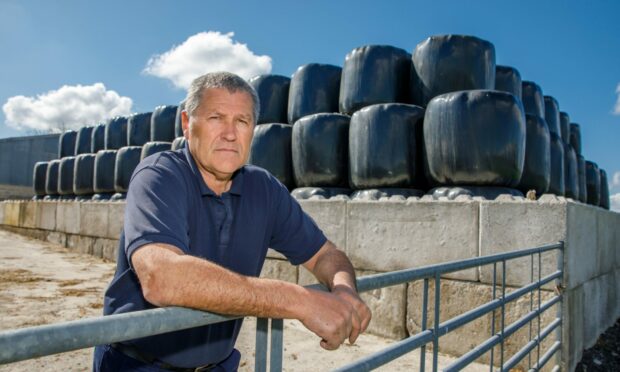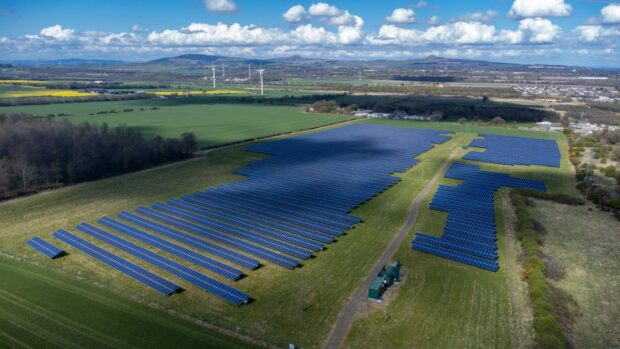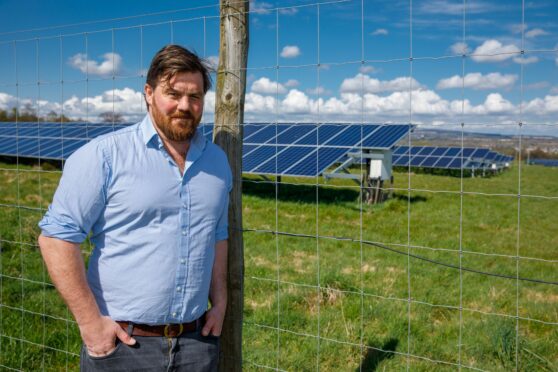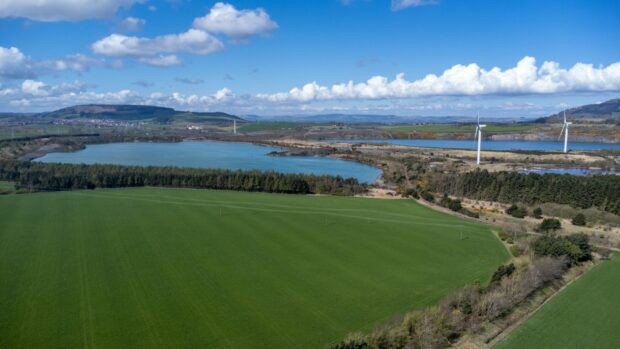It seems Strathruddie Farm is destined to be involved in the energy business – one way or another.
The Fife farmland was reinstated to green fields just a few decades ago after being buried for years under opencast coal mining bings, and now its 115 acres are poised to be covered in a solar panel and battery storage development.
Farmer Robin Drysdale describes his land as “cold and bare”, and unsuitable for growing cereals, but it produces good haylage which he sells to equestrian customers,
and it is a base for his extensive contracting business.
However, by 2024, a 25 MW solar and 20 MW battery storage development tucked away behind the trees and hedges will come on stream to deliver energy to more than 7,000 homes for at least 30 years.
Solar energy is not new in Scotland, with several farms already producing power and a number of renewables companies keenly developing sites. However, of the 11,933 MW of capacity to generate renewable electric power here at the end of 2020, only 271 were solar, which is just over 2%.
Meanwhile, this corner of Fife has a long history of energy production and in addition to its coal mining history, there are wind turbines and other solar farms close by, and Westfield, a major sub station is just two kilometres away.
Fife Council ‘very pro-renewables’
That proximity to the grid is what makes Strathruddie such an appealing site for developers such as Renewable Connections, a start-up company founded by Armstrong Capital in 2020.
According to John Lindsay, the company’s development manager, who is currently cold-calling farmers all the way down Scotland’s east coast, the requisites for solar sites are around 100 acres of flat or gently sloping Grade 3 land with good exposure to the sun and which isn’t overlooked by residential housing.
A means of connecting to the grid is also a priority, whether that is overhead lines or a nearby substation.
“The closer you are to the grid, the cheaper it is to connect and therefore make a viable scheme,” he says.
“However it starts with a site that works topographically with a willing landowner, and then you need a willing council that will provide planning consent. And Fife Council is very pro-renewables.”
Strathruddie was granted planning permission in March, making it the company’s most advanced project, and they have another four at various stages in the pipeline – in Aberdeenshire, Angus, Fife and West Lothian.
’30 years-plus of income and financial security for the family’
On offer to farmers is a 30-year lease of the land, with options for five-year extensions, and what he describes as an “attractive and healthy” rent per acre.
Mr Lindsay, formerly a rural manager for Taymount Estate in Perthshire, refuses to be drawn on the financial package, but local sources suggest rents are in the region of just under £1,000 per acre.
Mr Drysdale says he was attracted to “the figures, 30 years-plus of income and financial security for the family”.
“I’m getting older and the plan is to still run sheep during the winter in the space between the rows of solar panels,” he adds.
As for the visual impact of a field full of photovaltaic panels quietly converting sunlight into renewable electricity, he says: “We’ve already got wind turbines at the back of us and we used to have pylons on our home farm. You just live with it.”
His core farm contracting business, which began in the 1980s when he started spreading chicken manure on farms around Thornton, now focuses on delivering and spreading paper pulp for lime within a 35-mile radius of Strathruddie.



